Abstract
The global oral health situation of 12-year-old children--decayed, missing, filled teeth (DMFT) index and the percentage of population affected--is described in this article using the latest representative studies for 80 countries included in the WHO Global Oral Data Bank (GODB) between 1986 and 1996. The quantity of information varied considerably: 68% of developed market economies had at least one national data set, compared with 38% of developing countries and 36% of economies in transition. By WHO region, the proportions were as follows: Eastern Mediterranean, 55%; European, 50%; Western Pacific, 48%; African, 39%; South-East Asia, 30%; and the Americas, 26%. Globally, the weighted DMFT index for all data in the GODB is < 3.0%, the WHO/Fédération Dentaire Internationale goal for the year 2000. For the data reviewed in this article, achievement and nonachievement of this goal are discussed, as is the variation in DMFT means and proportions of children affected for various country groupings. There are difficulties in obtaining recent data for many countries, but the article emphasizes the need to maintain and develop the GODB to facilitate the compilation of valid, reliable and comparable data on oral health.
Full text
PDF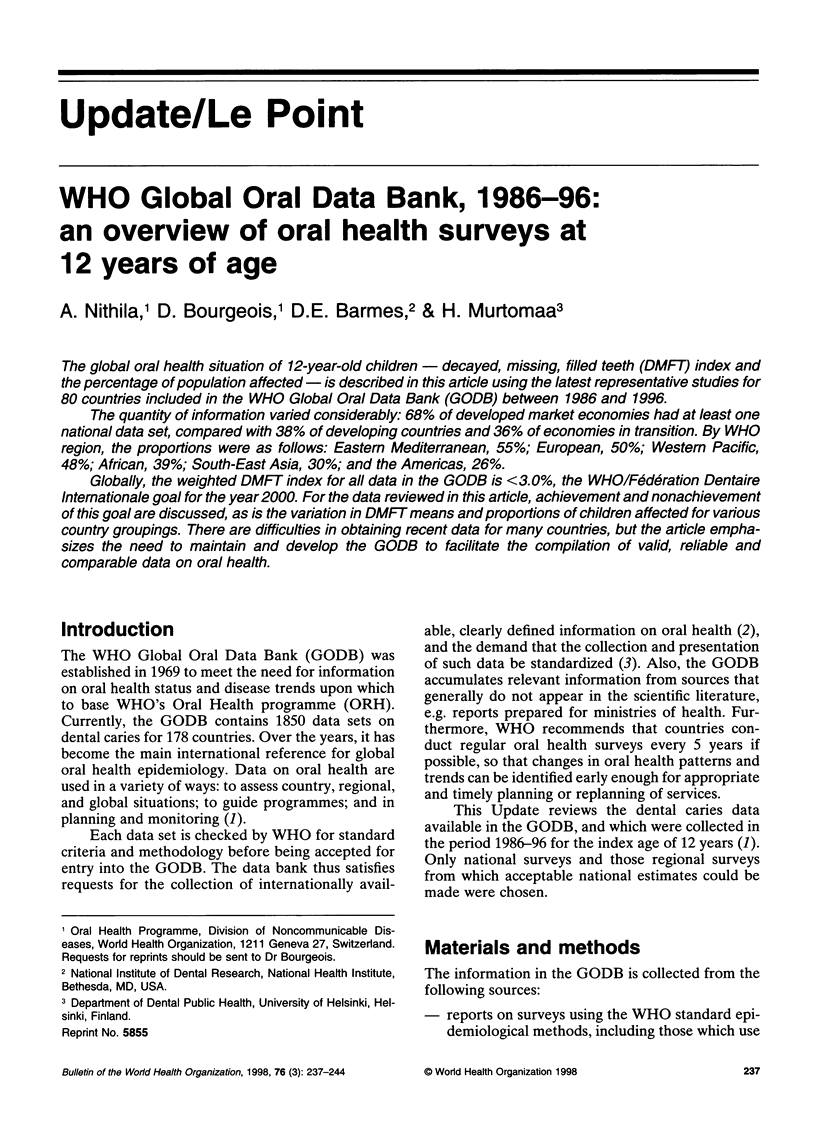
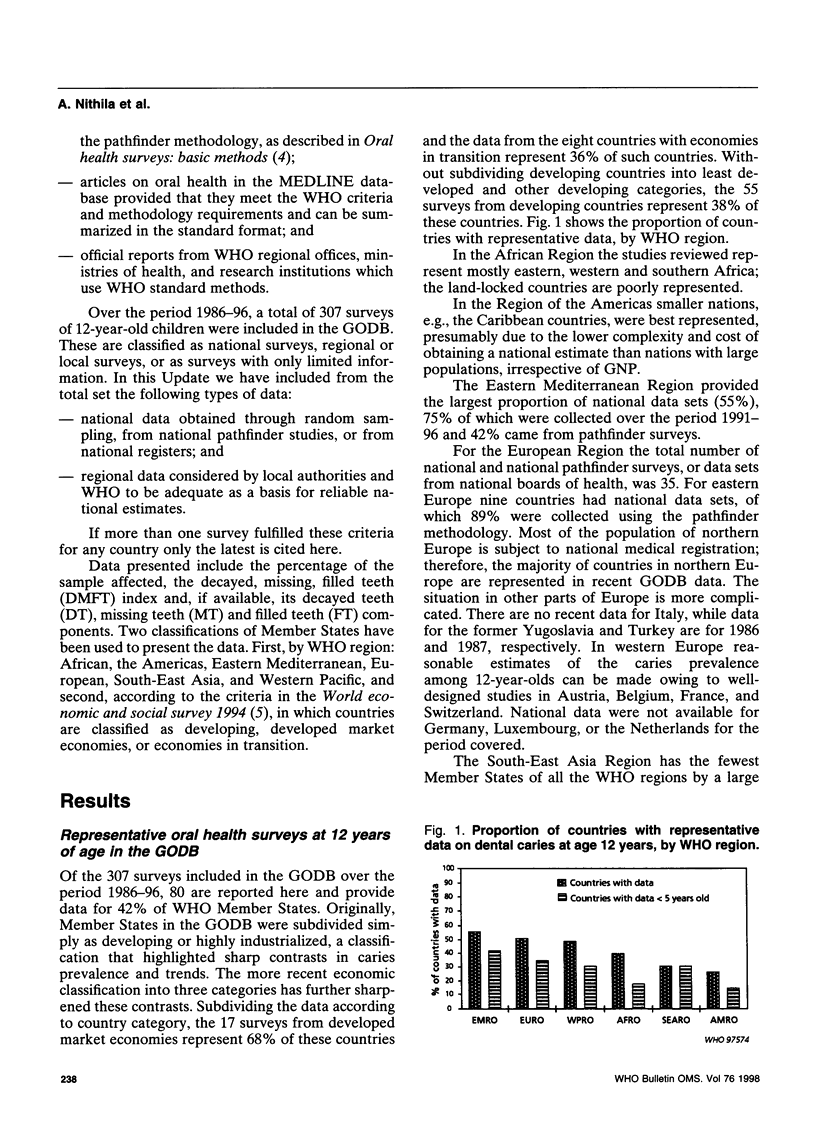
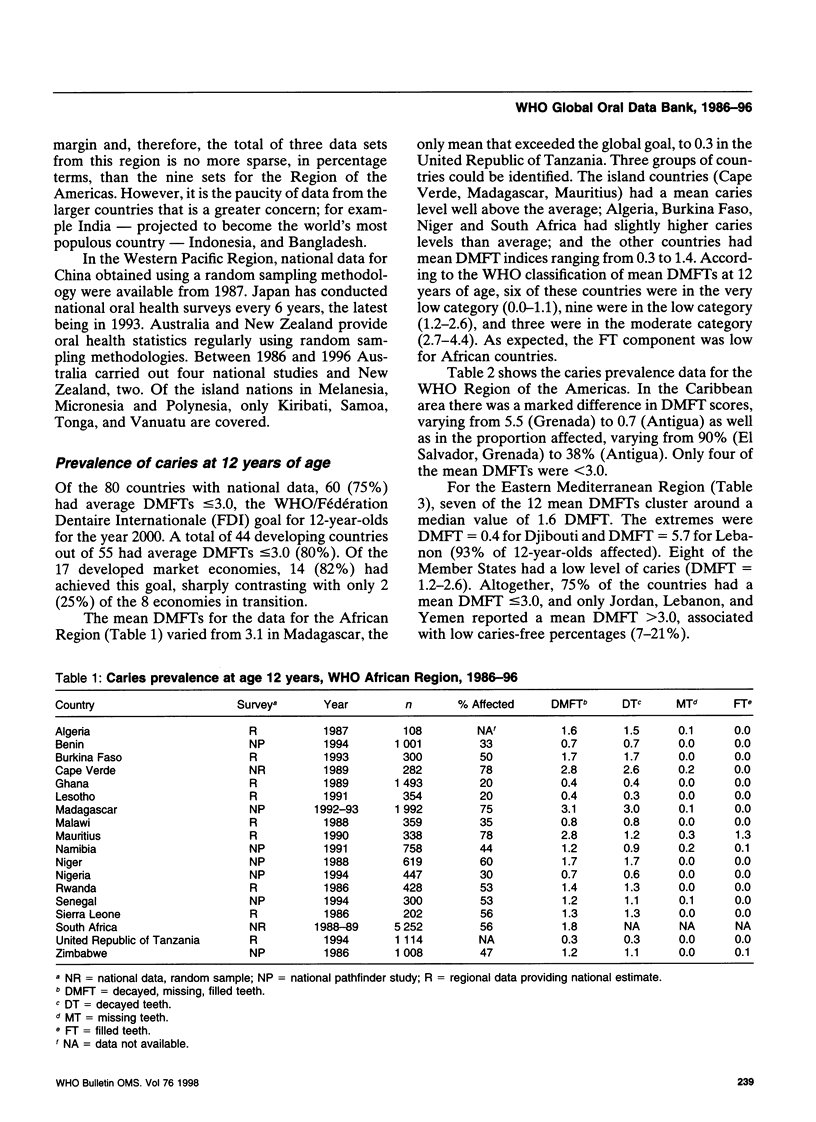
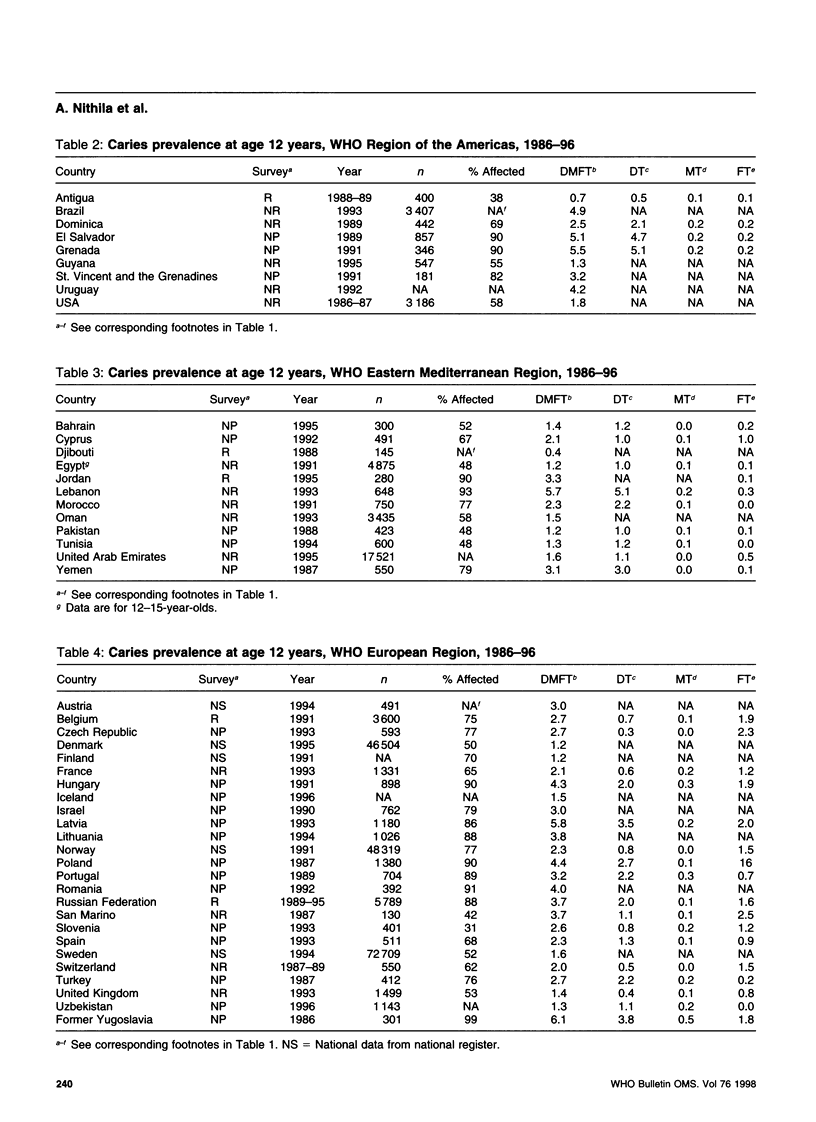
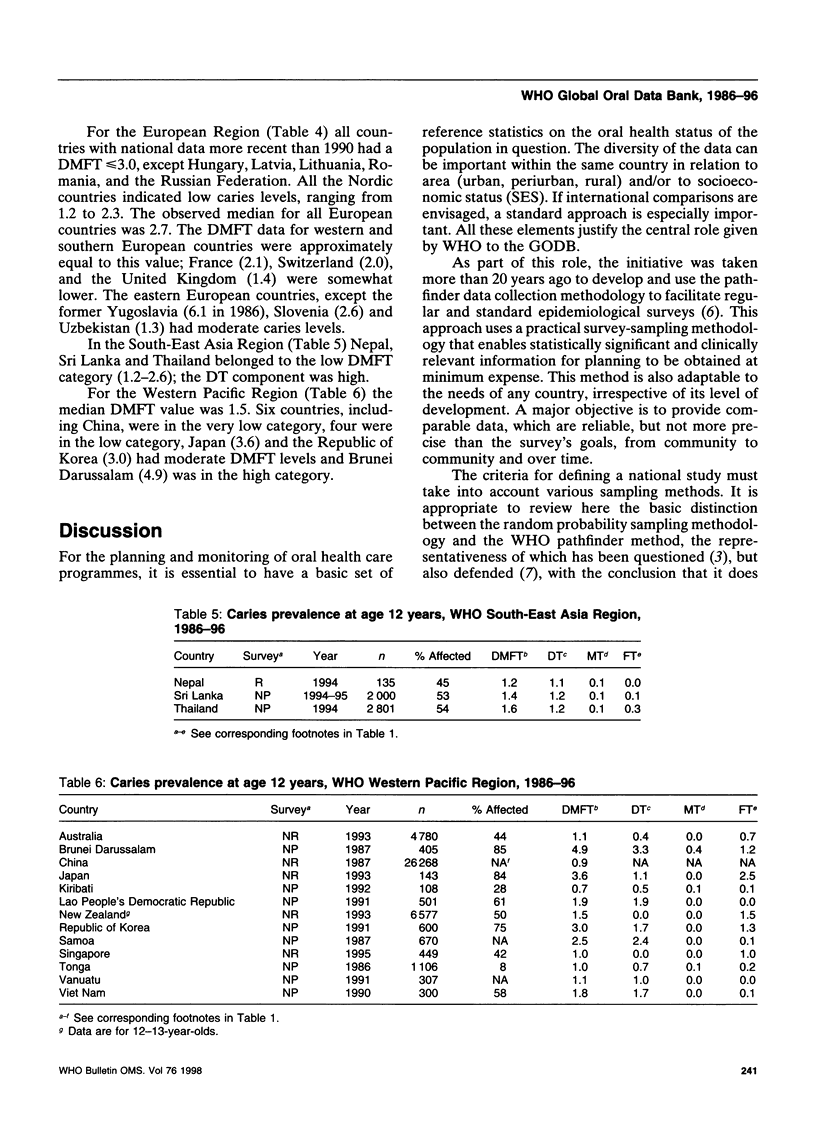
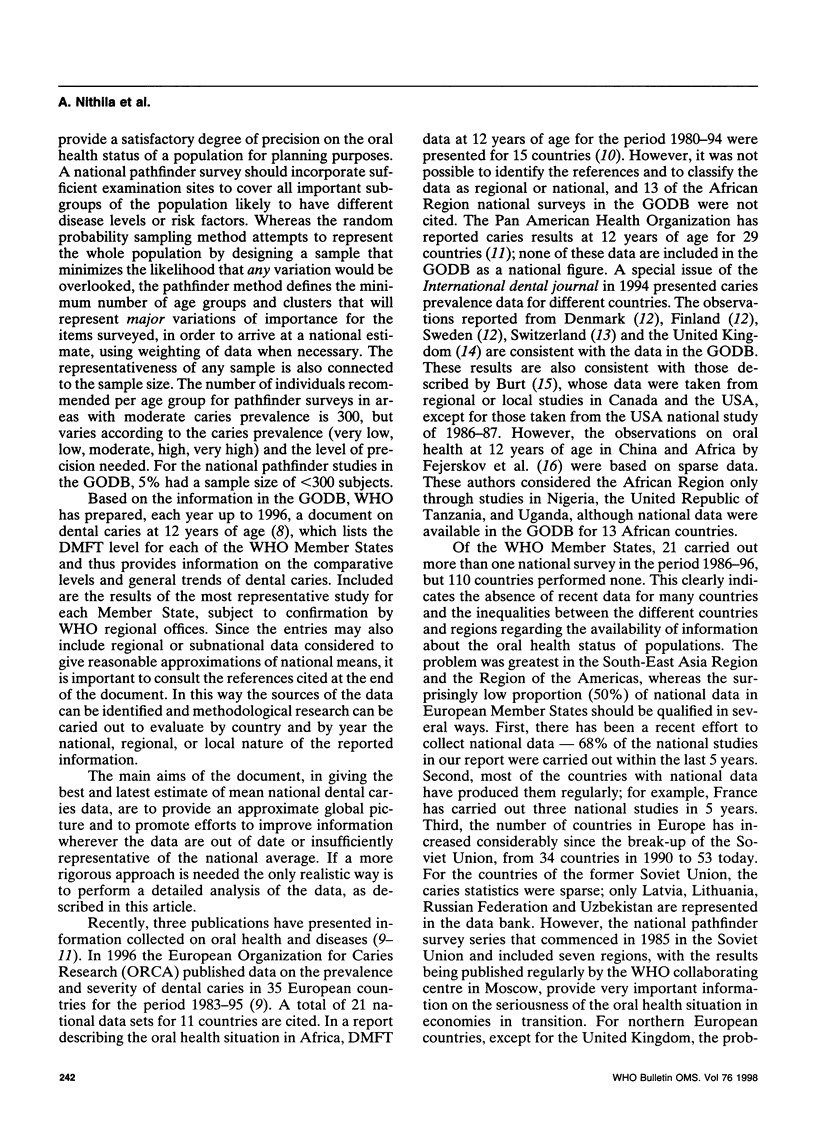
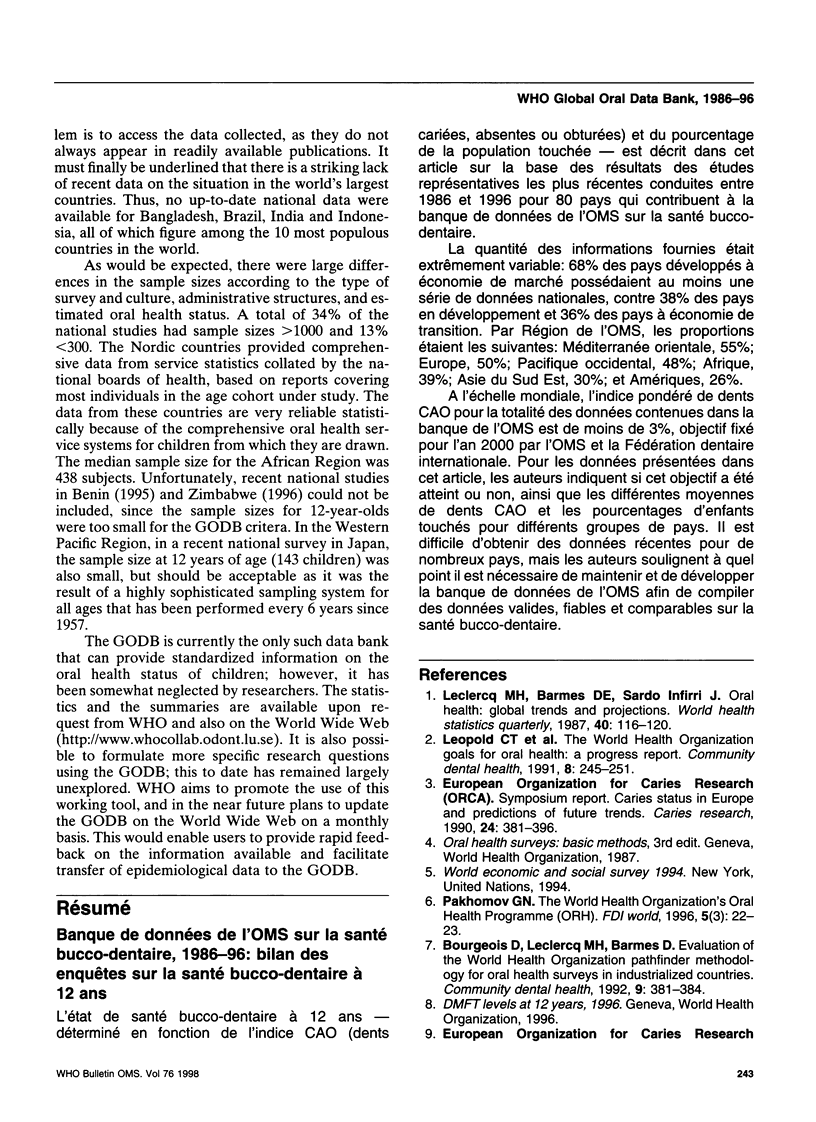
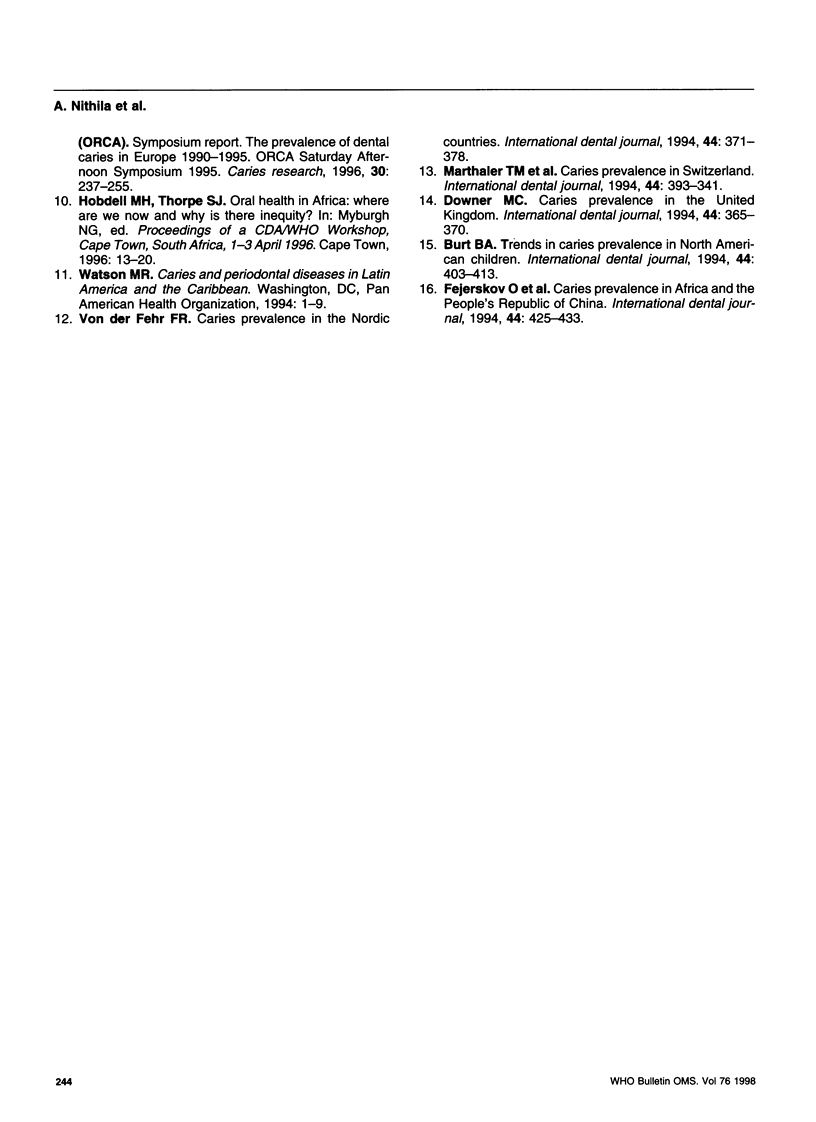
Selected References
These references are in PubMed. This may not be the complete list of references from this article.
- Bourgeois D., Leclercq M. H., Barmes D. Evaluation of the World Health Organisation pathfinder methodology for oral health surveys in industrialised countries. Community Dent Health. 1992 Dec;9(4):381–384. [PubMed] [Google Scholar]
- Burt B. A. Trends in caries prevalence in North American children. Int Dent J. 1994 Aug;44(4 Suppl 1):403–413. [PubMed] [Google Scholar]
- Downer M. C. Caries prevalence in the United Kingdom. Int Dent J. 1994 Aug;44(4 Suppl 1):365–370. [PubMed] [Google Scholar]
- Fejerskov O., Baelum V., Luan W. M., Manji F. Caries prevalence in Africa and the People's Republic of China. Int Dent J. 1994 Aug;44(4 Suppl 1):425–433. [PubMed] [Google Scholar]
- Leclercq M. H., Barmes D. E., Infirri J. S. Oral health: global trends and projections. World Health Stat Q. 1987;40(2):116–128. [PubMed] [Google Scholar]
- Marthaler T. M., Steiner M., Menghini G., Bandi A. Caries prevalence in Switzerland. Int Dent J. 1994 Aug;44(4 Suppl 1):393–401. [PubMed] [Google Scholar]
- Pakhomov G. N. The World Health Organisation's Oral Health Programme (ORH). FDI World. 1996 May-Jun;5(3):22–23. [PubMed] [Google Scholar]
- von der Fehr F. R. Caries prevalence in the Nordic countries. Int Dent J. 1994 Aug;44(4 Suppl 1):371–378. [PubMed] [Google Scholar]


